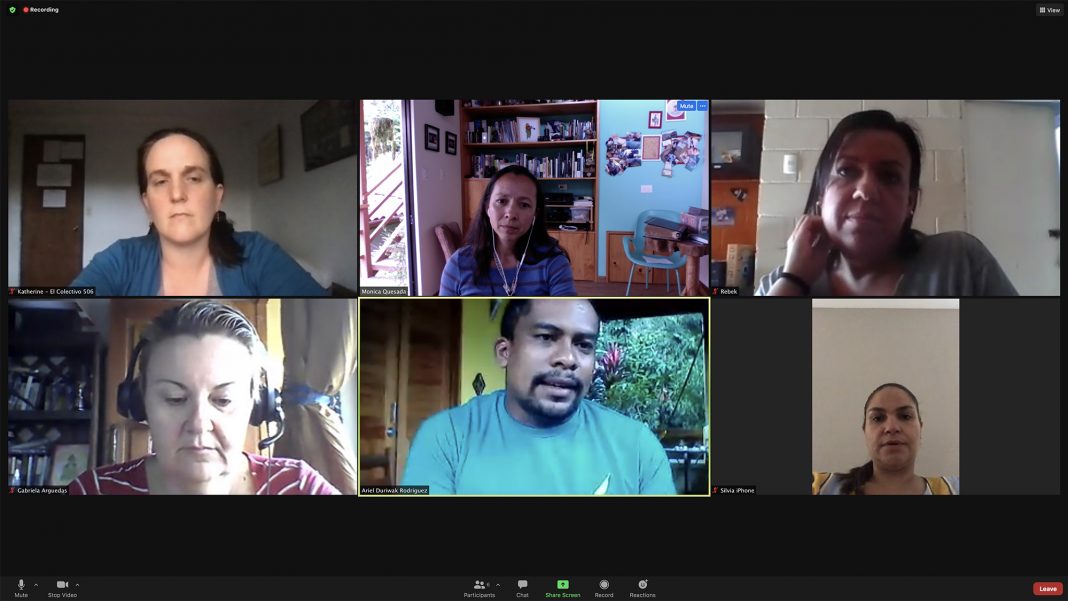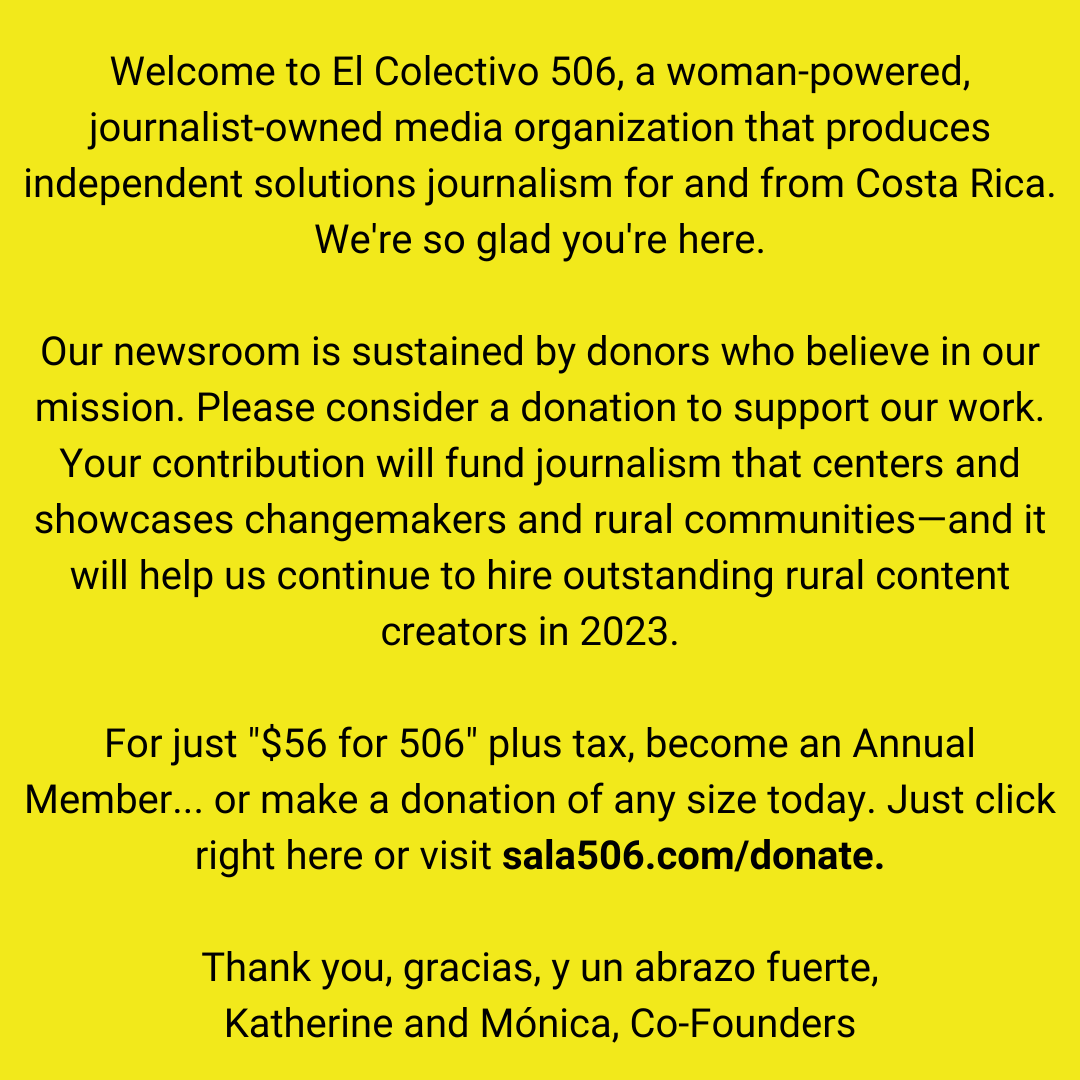When a journalism student asked me earlier this week how El Colectivo 506 finds the solutions that we report about, a series of faces flashed in front of my eyes. Faces that, across tables or Zoom screens, have lit up over the past two-plus years while telling me about someone who’s making a difference. Someone who’s trying to move the needle on a problem that they or their community is facing.
In Bahía Chal, on the Osa Peninsula, Lilliam Nieto asked if we knew how volunteer forest fire brigades are rising to the challenge of the climate crisis.
In Chicago, Illinois, Ann Becker asked if we knew about the Drake Bay Nature Guides’ Association (AGUINADRA) and its ingenious pandemic emergency response.
In Bataan de Limón, Arturo Barrantes asked if we’d heard how the radio station at the school where he teaches was inspiring young people and combating misinformation.
I could go on. But the point is that while journalists can report on societal problems by reaching out to institutions and experts, we simply can’t report on potential solutions without relying on our reader community. (And when I say “rely,” I mean RELY. Heavily.) As I thought about the student’s question—voiced as El Colectivo 506 I participated on a panel for a solutions journalism event convened by Pop News—I realized that during this month focused on our reader communities, I should explain why.
When we decide to study a problem, whether that’s a lack of funding for national parks or poor access to mental health services in rural areas, there are times when the solution we should study is obvious. It’s a government policy. A nationwide curriculum. A municipal program. Applying the rigor and investigation of solutions journalism to these better-known efforts is crucial, because it often brings to light limitations and lessons learned that haven’t ever been reported.
However, much more often, the people who are working to solve problems on the ground are not even on the radar of the decision-makers, analysts and academics. There’s no way to find them from the top down.
That’s why solutions journalists are only as effective as the communities they build. El Colectivo 506 would not exist without ours. You are family members and close friends; people we’ve met through our stories who have become trusted, regular commenters and contacts; contacts who say, “Hmm, my second cousin knows this woman who knows this guy.”
You are Costa Ricans in Europe who’ve told us about grassroots efforts back home. You are foreign residents in nooks and crannies all over the country who’ve alerted us to projects they love. You are Costa Ricans of all walks of life who have stepped up to share what they’re seeing around them.

We’re not searching for an incredible, innovative and time-tested intervention—though, of course, those are fantastic. We’re just searching for people who’ve tried to move the needle, even if they’ve failed. (Sometimes, that’s the most valuable learning of all.) What we need from our readers, and have received time and time again, is to help us broaden the circle of faces that we see when we imagine our community. More thinkers, more doers, more “dammit, I’ll just fix this myself”-ers.
That’s why we’re taking this month to connect and reconnect with people who love Costa Rica—because we can’t do what we do without you. So please, take our survey, which will give us valuable information to help us move forward. Join our special bilingual Newsroom Zoom on November 30th at 4 pm CR/5 pm EST to celebrate Costa Rica in the company of kindred spirits, and brainstorm ideas together for 2023. Or just send us a WhatsApp message at +506.8483.1992 to say hi.
“How do you find the solutions you report on?” asked the student.
The answer: through all of you.








